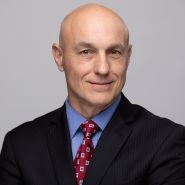Recent CAFC Decision should help Patent Applicants and Patentees with Obviousness Attacks
- February 5, 2018
- Article
Associated People
Recent CAFC decision should help patent applicants and patentees with obviousness attacks
On January 30, 2018, the Court of Appeals for the Federal Circuit (CAFC) gave patent applicants and patentees a little something to cheer about. In Smith & Nephew v. Hologic, the Court held that that a prior art reference relating to an apparatus for winding glass fibers was non-analogous to the claimed surgical instrument, and thus could not be relied upon to reject the claims as being obvious.
To determine if a prior art reference is analogous, one must consider “(1) whether the art is from the same field of endeavor, regardless of the problem addressed, and (2) if the reference is not within the field of the inventor's endeavor, whether the reference still is reasonably pertinent to the particular problem with which the inventor is involved.” That second prong, which depends greatly on how one defines the “problem,” can sometime lead to surprises and frustrations for patent applicants when the USPTO applies references from completely different fields of endeavor. And, an argument that an applied reference is non-analogous is rarely persuasive at the USPTO.
In this case, the USPTO had found that the prior art reference disclosed the claimed helical groove and was relevant to solving the technical problem of converting rotational motion into simultaneous rotational, translational, and reciprocal motions. Because another prior art reference (inside the field of endeavor) taught that the shape of the cam groove can be modified to vary the number of reciprocations per rotation of the drive piston, the USPTO found that a person of skill in the art would seek out teachings regarding relevant cam grooves.

But the Court found that the USPTO “erred by too narrowly construing the problem addressed” by the inventors who “focused on solving the difficulty in cutting large amounts of semi-rigid tissue.” In contrast, the prior art reference “is directed to winding glass fiber. Even though both ended up with similar mechanical solutions, it is beyond a stretch to say that” the reference “logically would have commended itself to an inventor’s attention in considering his problem.”
Of note, the Court relied favorably on its earlier pre-KSR decision in In re Clay (Fed. Cir. 1992). In this earlier case, “both the patented invention and the prior art reference related to the petroleum industry, and both taught using a gel.” Yet, the Court “found that they were not directed to the same field of endeavor because the two inventions were used in very different environments (one, the extraction of crude petroleum, and the other, the storage of refined liquid hydrocarbons).” The reference was also not reasonably pertinent to the problem the inventor was trying to solve.
Thus, the above two CAFC decisions could be cited when countering obviousness attacks at the USPTO and/or in courts. While the non-analogous argument may not always get much traction at the examiner level, it should fare better at the PTAB and in court if factually supported.
Read the full Smith & Nephew v. Hologic decision here, with the non-analogous discussion starting at the bottom of page 8.










 Counseling & Strategic Advice
Counseling & Strategic Advice IP Transactions
IP Transactions Litigation
Litigation PTAB Proceedings
PTAB Proceedings Start-Up
Start-Up Technology Transfer
Technology Transfer Trademark & Designs
Trademark & Designs U.S. Patent Procurement (Application Drafting & Prosecution)
U.S. Patent Procurement (Application Drafting & Prosecution)








